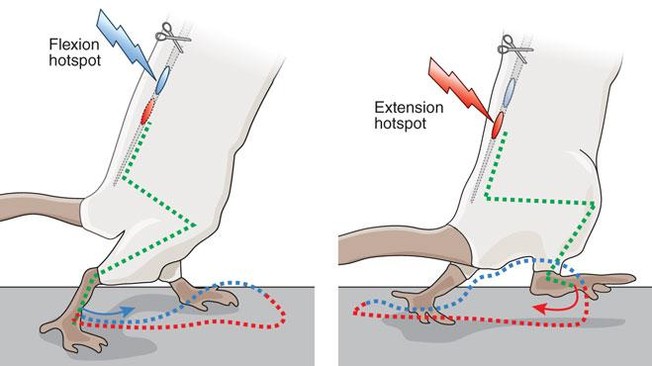
20.01.16 - Professors G. Courtine, S. Micera and S.P. Lacour, publish their latest results on restoration of locomotion after spinal cord injury in Nature Medicine.
Lower limb movements in healthy subjects are created by sets of neurones (the cells of the nervous system) which are triggered in a specific order to produce the required result, much like a wave travelling through water and hitting different points consecutively. Through observing healthy subjects it was discovered that walking involves alternating activation of bundles of neurones in «hot spots» in extensor (i.e. leg straightening) and flexor (i.e. leg bending) muscles. These hot spots then trigger local circuits to initiate the movement, thus locating and activating the correct hot spots is absolutely essential for controlled, precise movements. In fact, activating the proprioceptive feedback loop (the process by which your brain knows where a certain part of your body is at any given time) was found to be enough to send the impulses back to the hot spots and activate movement as these feedback systems create patterns of motor signals, much like repeating an exercise such as lifting weights or using a rowing machine creates muscle memory, making the same exercise easier and more natural with every repetition.
This publication demonstrates the recent advances in electrical neuromodulation hardware, focusing on «hot spots» in order to refine the movement produced by replicating how the motor system creates that movement in able bodied subjects. The team behind the publication used computer simulations of movement in mammals to identify exact locations on the spine to place the electrodes to provide stimulation by looking at proprioception feedback loops. By using the provided information, and observing patterns of movements in the subjects, engineers could design implants that would deliver electrical stimulation to multiple precise desired points with the right timing on the spine which allow control over movements.


